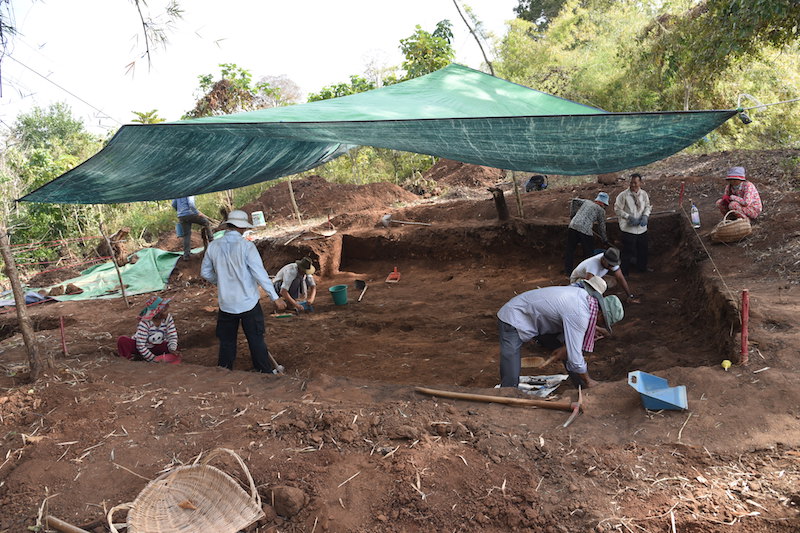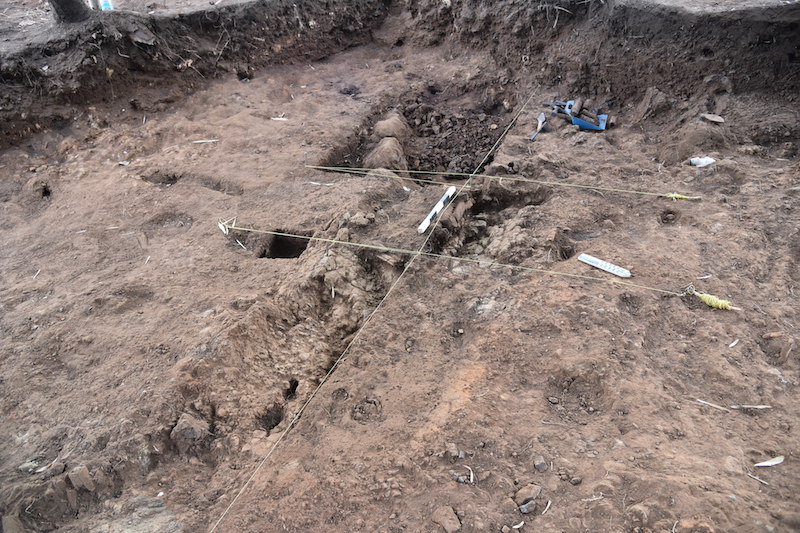On the second day of a three-week excavation in 2017 in Preah Vihear province, the archaeologists unearthed what they had spotted during previous surveys in Rovieng district near Phnom Dek mountain: a furnace used a millennium ago to extract iron from ore.
“We found the footprint of the furnace and some of the sidewalls that had collapsed…and we found the base of it,” said Canadian archaeologist Mitch Hendrickson of the University of Illinois at Chicago.
While evidence of smelting—the process of extracting base metal from its ore— during the Angkorian era has previously been discovered, it’s the first time a furnace has been found.
Mr. Hendrickson and archaeologist Phon Kaseka, director of archaeology at the Royal Academy of Cambodia, first surveyed the site in 2009 and spotted furnace pipes. Returning in 2013, they extracted charcoal and had it carbon dated, which revealed that it was produced between the 11th and 12th centuries, during the Angkorian empire.

Their latest find has also yielded more clues about iron production, a metal essential to the Angkorian empire, used to make weapons for its armies and tools for its farmers, or provide reinforcement bars needed to build temples, Mr. Kaseka said.
“The way that we think they built them is that they constructed the furnaces out of clay: They smelt the iron and then, to extract the bloom, they had to break down the walls,” Mr. Hendrickson said.
Indications are that smelting was done over a long period at the site and that the nearly intact furnace was the last one used before they stopped smelting there.
“One of our trenches that cuts through the entire mound shows at least six or seven different phases of smelting,” Mr. Hendrickson said. “So there are probably many, many more furnaces below where we are excavating right now.”
The find had revealed that a furnace did not need to be big to produce large amounts of iron. A clay furnace could be just 1-by-2 meters, and set at a slight angle so that liquefied iron ore could flow out of it, Mr. Kaseka said.

South of the site, classic white Chinese porcelain and distinct brown glaze from the Angkorian period, along with iron objects and sandstones, have also been found.
“There is definitely a community presence here,” Mr. Hendrickson said. “It’s the only site that we’ve identified in the seven years that we’ve been walking down Phnom Dek, which has direct evidence of intensive occupation near an iron production site.”
Until now, it was believed that iron smelting was done away from towns or villages, he added.
Since 2009, 235 iron-slag mounds have been found in two districts of Preah Vihear province: Sangkum Thmei and Rovieng, where the dig is taking place, said Voeun Vuthy, director of the Culture Ministry’s department of archaeology and prehistory, who oversees the excavation project. “This shows how important iron production was at one time in that part of the country,” he said.
According to english.cambodiadaily.com











